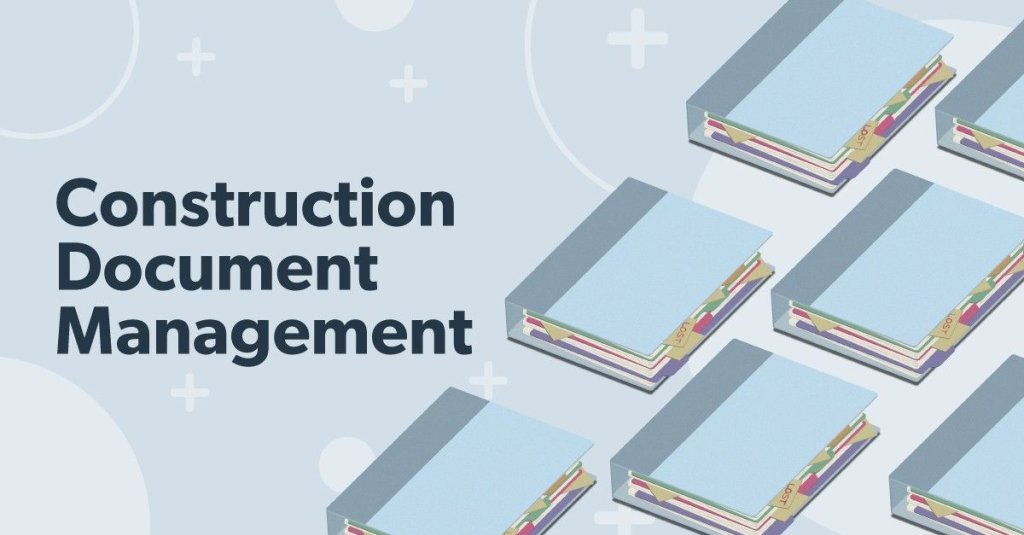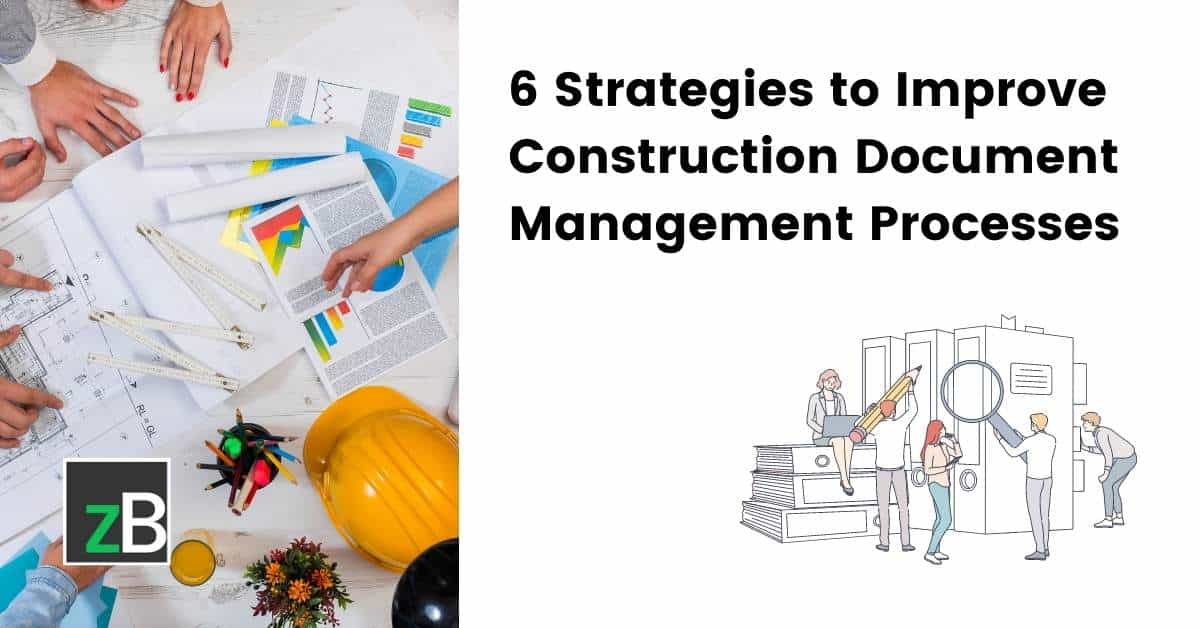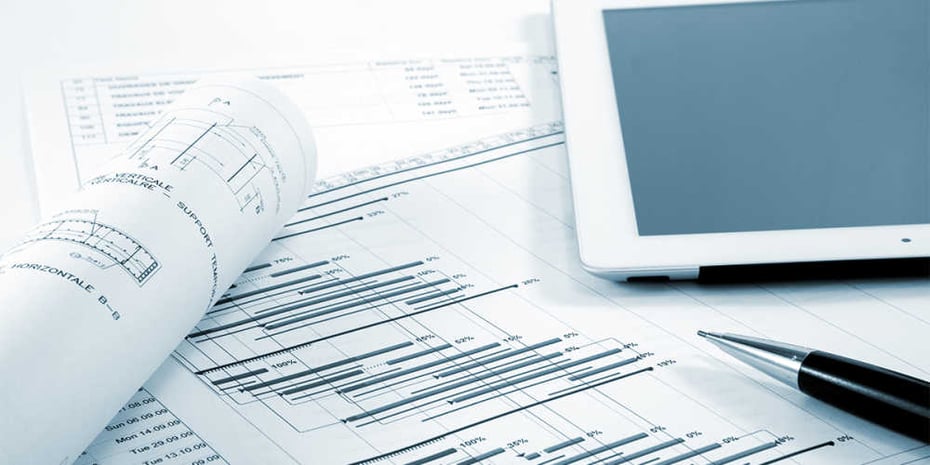Designer's Guide to Streamlining Building And Construction File Monitoring for Efficient Task Execution
The process of arranging, sharing, and preserving these documents can frequently come to be a labyrinth of inefficiencies and obstacles if not dealt with diligently. By checking out organized techniques, innovative devices, and industry finest methods, architects can not only streamline their file monitoring processes yet also lead the means for a lot more efficient job implementation.
Value of Efficient Paper Management
Effective file monitoring is crucial for engineers in the building industry as it plays an essential function in ensuring the effective execution of tasks. Proper company and administration of these files are essential to keep job timelines, guarantee compliance with laws, and assist in efficient communication amongst task stakeholders.

Effective record administration enables architects to accessibility essential details without delay, track task development precisely, and reduce risks associated with errors or noninclusions. By executing streamlined document management procedures, designers can improve collaboration with clients, contractors, and various other group members, leading to improved task results and client complete satisfaction.
Moreover, reliable paper administration assists architects keep a thorough task history, enabling them to leverage past lessons and experiences discovered for future jobs. In today's fast-paced construction market, where timely decision-making and information sharing are vital, reliable record administration is a cornerstone for success.
Techniques for Enhancing File Company
Reliable file monitoring methods not just guarantee task success for designers in the building and construction market yet likewise lay the structure for executing approaches for improving record organization. To enhance file company effectively, designers should first develop a clear naming convention for documents and folders. Uniformity in calling data based upon project stages, document kinds, and relevant info will certainly help with simple access and minimize confusion.
Utilizing cloud-based storage services can also enhance file organization by offering a centralized place for all project-related data - construction document management. This enables team members to access the most up-to-date documents from anywhere, promoting cooperation and performance. Implementing version control mechanisms further refines document company by tracking adjustments, preventing contrasting edits, and making certain that the current variations are constantly offered
Additionally, producing a logical folder structure with designated subfolders for various paper classifications, such as requirements, illustrations, and agreements, can improve document monitoring processes. Frequently reviewing and removing outdated or repetitive data will assist maintain a lean and well organized file database, eventually enhancing efficiency and project results.
Leveraging Technology Devices for Partnership
In the realm of modern-day design, engineers are progressively relying on sophisticated modern technology tools to promote seamless partnership amongst task stakeholders. Cloud-based systems such as BIM 360 and Procore permit real-time accessibility to task papers, making it possible for service providers, engineers, and customers to team up properly no matter of their physical area.
Digital layout and construction (VDC) software like Revit and AutoCAD Architecture enable architects to find this develop thorough 3D versions that can be shared and modified collaboratively. This real-time cooperation improves layout control, visualization, and precision, resulting in far better decision-making throughout the job lifecycle. Additionally, communication devices like Slack and Microsoft Teams supply immediate messaging, file sharing, and video conferencing capacities, promoting seamless interaction among team participants and stakeholders.
Ensuring Precision and Variation Control

Efficient version control likewise helps in handling document authorizations and ensuring that just authorized workers make modifications. Designers should develop clear methods for recording adjustments, including timestamps and user identification, to develop an audit trail for liability. Frequently connecting with the job group concerning version updates and modifications is important to stay clear of complication and maintain positioning throughout the building and construction process.
Finest Practices for Record Sharing and Access
Having developed a durable system for version control in building record management, designers can currently focus on enhancing paper sharing and accessibility methods to improve cooperation and efficiency among job stakeholders. Among the very best methods for efficient document sharing is to utilize cloud-based systems. These platforms use real-time accessibility to task files, making it possible for employee to see, modify, and comment on site here documents at the same time. By systematizing documents in a cloud environment, architects can ensure that all stakeholders are working with the most up-to-date information.
Furthermore, implementing role-based accessibility control is crucial for maintaining data safety and security while helping with collaboration. Appointing various consent levels to employee ensures that sensitive information is just easily accessible to licensed employees. Regularly upgrading gain access to permissions based upon project needs and team changes is vital for preserving data stability.
Integrating task administration Click Here software with paper sharing systems can likewise streamline operations. This assimilation permits seamless communication, task monitoring, and file management within a solitary interface, minimizing the need to switch over between numerous tools. By adhering to these finest practices, engineers can create a much more efficient and collective file sharing setting, ultimately causing effective project implementation.

Verdict
To conclude, effective building file management is crucial for effective job execution. By executing strategies for company, leveraging innovation tools for cooperation, making sure accuracy and variation control, along with following ideal methods for file sharing and accessibility, designers can streamline their operations and enhance overall job efficiency. Focusing on these elements of record administration will cause smoother project implementation and far better end results for all stakeholders involved.
Reliable file monitoring is vital for architects in the building sector as it plays a critical duty in guaranteeing the effective execution of tasks. construction document management. Proper organization and monitoring of these files are imperative to preserve task timelines, ensure compliance with laws, and help with efficient interaction among job stakeholders
Reliable document management methods not just ensure project success for designers in the construction industry however additionally lay the foundation for executing methods for simplifying file company. One vital strategy is establishing a centralized paper database where all group members can access the newest variations of illustrations, requirements, and various other project files.Having developed a durable system for variation control in construction paper management, designers can currently focus on enhancing document sharing and access techniques to improve cooperation and effectiveness amongst job stakeholders.
Comments on “Simplify Your Operations: Construction Document Management Made Easy”